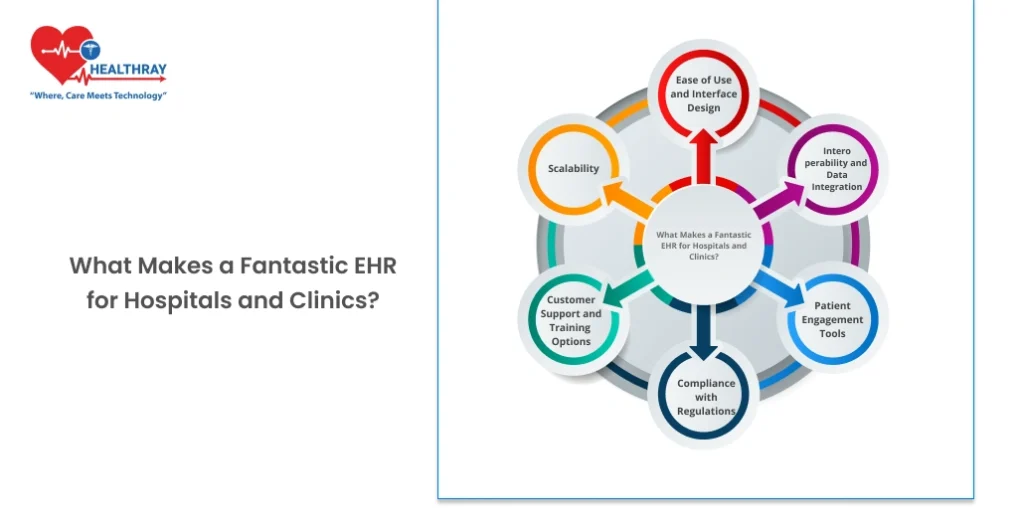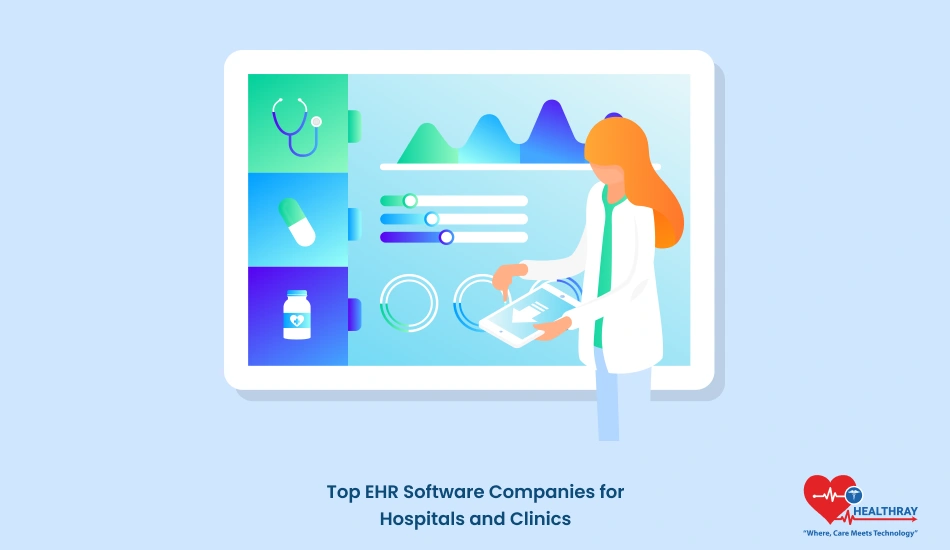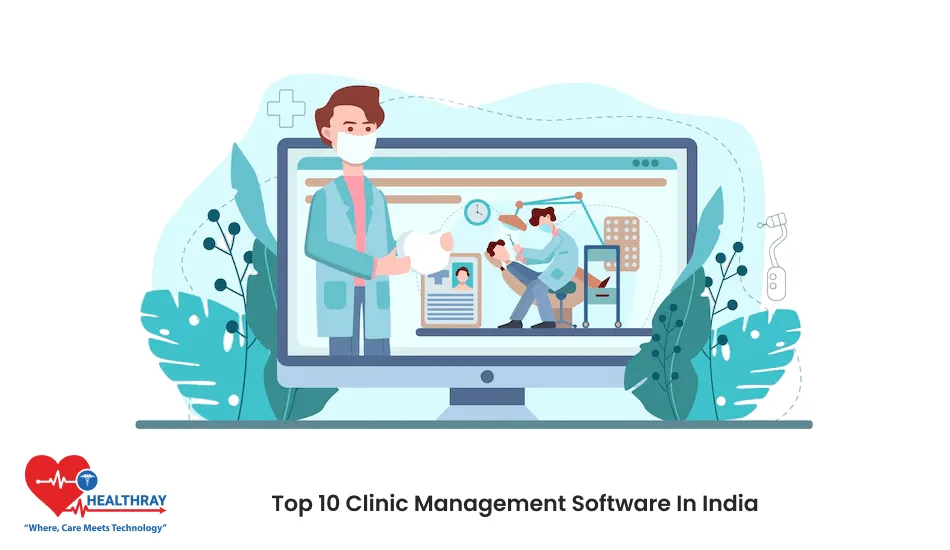Introduction
EHR software is quite indispensable for hospitals and clinics nowadays. The right EHR system will allow health organizations to better manage their business, improve the care for their patients, and ensure that data is secure and health regulation compliant. But it is quite difficult to identify just what the best EHR for an organization is because so many are in the market.
This guide shows the best EHR software companies that are doing great in the healthcare sector, especially for hospitals and clinics. The companies listed above have been picked based on the reputation, the features, and the customer feedback in the health care sector. We shall discuss further what sets these companies apart, features, and considerations in different types of health care organizations.
What Makes a Fantastic EHR for Hospitals and Clinics?

EHR software stands as one critical selection that potentially impacts the annual workflows of patient data and long-term security requirements. Some features and abilities about which hospitals and clinics should hone in when it comes to scrutinizing EHR solutions are thus as follows
Ease of Usability and user interface design.
EHRs should be easy to use. Healthcare providers undergo a lot of pressure, hence they require a system that will not restrict them but rather enable them. The simple interface has reduced training time and minimizes mistakes and makes staff spend most of their time attending to the patients.
Interoperability and Data Integration
EHRs should enable effortless connectivity with other health systems. Interoperability also means that the patient’s data can be transferred between the various departments or even other health facilities if that is required. This further links lab systems, pharmacy software, and imaging services to minimize data entry and increase coordination of care.
Patient Engagement Tools
Modern healthcare is becoming more patient-centered. EHR systems that provide patient portals, appointment scheduling, and access to personal health records enhance patient satisfaction and promote proactive health management. Telehealth features are also beneficial for clinics and hospitals, which have become essential in recent years.
Compliance with Regulations
EHR software should comply with healthcare regulations, especially those concerning patient data privacy and security. It must be HIPAA compliant, among other regional regulations, to ensure that the data of patients is safely stored and handled. There can also be built-in auditing tools that help track access and changes to sensitive information by hospitals and clinics.
Customer Support and Training Options
The EHR provider should be able to provide support at the time of implementation and during its lifetime. Firms that provide full training, on-demand support, and constant update assistant make sure that hospitals and clinics operate efficiently and reduce their chances of going into downtimes.
Scalability
Indeed, with growing sizes in the number of patients and in healthcare services delivered within the premises of hospitals and clinics comes a sense of increasing sizes of software to be implemented for information. On these scales, the system should then become adapted in features, number of users, or storage size in the eventuality, with less disorientation and the requirement to totally renovate the full renovation of it.
This awareness of these factors and how they can be applied to your unique needs goes a long way in narrowing EHR choices. Now, with priorities in mind, it is time to review the top EHR companies that are going the distance in the healthcare industry.
Top EHR Software Companies Overview

All of the EHRs mentioned below has been covered as the best in specific areas, either for usability or scalability or even support. Now, let us dig into top company options that are specifically great for hospitals and clinics for a comparison:
Healthray
Overview: Healthray is one of the leading players in the EHR space. It is very popular with large hospitals and healthcare systems, though perhaps more often chosen by institutions who are looking for a solid, one-size-fits-all solution.
Some of the key features include scheduling, patient management, and billing. Advanced tools in data analysis and reporting are also provided. Besides that, interoperability is also an essential feature in the healthray system, thus enabling the health system to connect with other health systems.
Pros and Cons: Even though Healthray is very customizable and powerful, it does have a steeper learning curve because of its complexity. It’s also one of the more expensive EHR options, which could be a factor for smaller facilities.
Bigscal Technologies
Overview Bigscal Technologies is one of the leading EHR solutions. Most of the hospitals and clinics of any size use Bigscal Technologies. It is also known for its scalability and specialties’ suitability.
Key Features: Bigscal Technologies has a user-friendly interface, excellent reporting capabilities, and a solid suite of patient engagement tools. It also supports interoperability with other healthcare systems and has cloud-based options for greater flexibility.
Pros and Cons: Bigscal Technologies is one of the user-friendly software solutions, and this leads to easy usage by the staff. Still, sometimes, bigscal technologies lack customization according to needs, and may also be too expensive for small clinics.
EMRSoftware.AI
Overview: These have gained popularity as they focus much on interoperability and patient engagement. A good choice for hospitals and clinics looking to have one system that can interact with other different software systems.
The following are the main features of EMRSoftware.AI: Patient scheduling, E-prescribing, population health management, and robust data-sharing capabilities that make it very suitable for multi-specialty hospitals or service lines.
Pros and Cons: This software is versatile and has integration with other systems. However, customer support has some problems with response times. Also, an old interface to someone who has used the newer alternatives.
inVerita
As a custom software development company, inVerita helps enterprises and startups build practical digital products with a focus on regulated industries such as healthcare, pharmacy, fintech, and logistics. Our 120+ engineers operate from delivery hubs in Ukraine, Poland, and Colombia, offering engagement models from dedicated teams to staff augmentation services. Our expertise in AI, ML, IoT, and cloud is backed by ten years of experience and multiple awards and recognitions in different domains.
How to Select the Best EHR Software for Your Hospital or Clinics?
Choose the right EHR software, and in so doing, identify that system which gives your facility exactly what they need. Hospitals and clinics operate differently, operate on a different budget, and process different volumes; therefore, there’s a more guided approach to evaluation. Here’s a step-by-step approach to help in decision-making when choosing the right EHR system.
Assess Organizational Needs
First, you check the requirements of your hospital or clinic. You need to judge the size of your facility, specialties you are catering to, budget, and the average number of patients coming through.
For instance, the larger the hospital, the greater will be its need for the advanced level on scalability and feature of integration; on the contrary, for the small clinic, usability and cost will be more of a concern.
Evaluate Features and Customization Capabilities
No two EHR systems are the same. Look for software that will give you the features you need – perhaps telehealth integration, patient engagement tools, or reporting.
Some vendors offer wide-open customization, allowing facilities to make the software fit a facility’s workflows. Consider how well the system can adapt to your facility’s specific processes.
Evaluate Compliance and Security Capabilities
It is important that the data of a patient should be secure and safe. The data should ensure all the prerequisites and be under federal or state laws like HIPAA or policies specific to that region.
Ask them to explain the different security features implemented, such as encryption, data backup, and access controls. Some EHR vendors include auditing features, for example, recording who read, wrote, and erased what. That is definitely a great feature in demonstrating compliance.
Ask for Demonstrations and Free Trials
I would start by trying it. Most providers offer demos or provide some periods where one would perform some critical tests over the features and thereby derive whether the system would easily fit the user.
You can ask the employees to provide feedback about the usage of the software during the evaluation period. Their comments and suggestions will be of ultimate value as they will continue to utilize the system while working daily. You would be able to make judgments on the ease and usability of the system regarding your day-to-day tasks and business operations through observations of staff usage of it.
Check the Customer Support and Training Services
An EHR system that assists clients well will have great support for a client, with comprehensive training. Find one that offers a good onboarding process, 24-hour service, and continuous upgrading of the system.
It is having reliable support, meaning when a person initiates the system implementation process, there is better control to ensure that the patients will have excellent care from the day that he or she begins with that system.
All these steps will ensure that EHR systems in hospitals will meet your needs concerning your hospital or clinic and will help improve both efficiency in operations as well as satisfy patients. A good decision made now would save you time, effort, and costs later down the line because your team will be ready with a system that supports them rather than complicating the work.
Conclusion
Hence, the right choice of EHR software is a very important task for hospitals and clinics since it has an influence on the entire level of patient satisfaction up to the optimum use of operational capabilities. After that comes the supporting smooth conduct of all health care operations, supporting a sound hospital management system. Although there are many such types of software available currently, the choice of one that corresponds to the exact needs of your institution-the befitting solution being either one like Epic suitable for bigger hospitals or one simple and affordable enough for use in smaller clinics like Kareo.
Knowing what to look for, such as ease of use, compliance, and interoperability, will narrow down the choices. Being ahead of emerging trends, such as AI-driven predictive analytics, cloud-based solutions, and telehealth integration, ensures that the EHR system you buy today will continue to evolve with the healthcare technology into the future.





